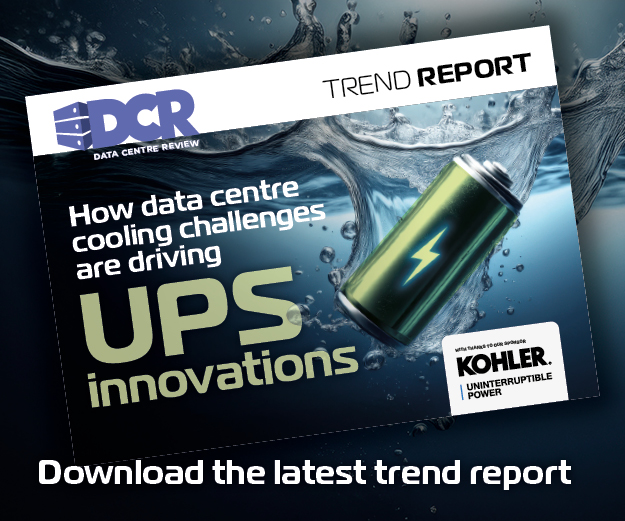Jakub Wolski, Data Centre Strategy & Business Development Leader at Trend Control Systems Ltd, highlights why energy efficiency is key to unlocking sustainability in the data centre industry.
Climate change is upon us, and inaction isn’t an option – every sector should be thinking about sustainability.
The UK Government unveiled its plan to reach net zero greenhouse gas emissions by 2050 in its Net Zero Strategy. This includes various initiatives and policies to reduce emissions, spanning all UK industries including key sectors such as energy, infrastructure, and transport. These industries have always been a focus but, amid broad industrial digital transformation, it has also shifted to the data centres we need for our daily routines.
Energy efficiency is a key priority in the data centre industry. Millions of people use energy-intensive apps every day – for cloud storage, remote working, AI – and for video streaming and online shopping. This means the demand for data centres has never been higher. And, though data centres have made great progress driving the energy transition by limiting their power demand globally, there’s still some way to go on the road to a more sustainable future.
When considering data centres, it’s vital to know that these facilities have become one of the most crucial resources in our modern world. We depend on them every day and they are the platform for the core services we rely on. They house the servers and storage systems that process massive amounts of data. However, they also use vast amounts of power, with the associated potential generation of greenhouse gases.
A 2022 report by IEA notes that data centres and transmission currently make up 1 to 1.3% of global electricity usage. Data centres and data transmission networks emit almost 1% of GHG emissions related to energy – combined. To meet global sustainability goals and help reduce carbon emissions, data centre operators must create clear actionable plans and be dynamic – thinking of new ways to operate.
The good news is that the general industry is demanding more solutions to support energy efficiency and resilience in their operations. To cut back on energy usage, some sectors are transitioning to technology such as advanced building controls and cooling systems. Upscaling automation, reporting, control, and visibility, the building energy management system (BEMS) and electrical power monitoring system (EPMS) – designed to observe energy and cooling distribution and consumption in real-time – can help data centre operators fulfil carbon reduction targets. Data centre owners and operators must keep up with industry trends – and they are being pressured to improve their energy efficiency.
Industry trends to watch
With the rise of emerging trends such as remote working, cloud computing, AI, and machine learning (ML), the way that data centres operate is shifting. Changes to the way we work, such as the remote work movement, mean firms are finding new ways to communicate and be agile. Data centre facilities are under added pressure due to digital transformation and the ongoing enrolment of innovative technologies. This is happening in unison with older data centres being stretched by the increased demand for data processing.
A key point to make is that older data centres can be less efficient. This means they may not operate to the same capacity and the equipment is not as powerful – these facilities need an infrastructure upgrade.
Also, there is now a high demand for edge computing, due to stipulations for low-latency apps. This trend continues to grow with the increasing use of Internet of Things (IoT) devices, real-time processing, and the need to decrease data transmission to centralised servers.
Apart from trends, the launch of new legislation and advanced security processes can introduce fresh hurdles. Transitioning to a higher level of energy efficiency can be onerous. It can clash with growth potential – operators must be balanced in their approach and consider bigger energy policy goals.
Advancements in large-scale data centres have enabled more consolidated electricity usage, but these huge facilities can put extra stress on local power grids. Overall, many challenges lie ahead for embedding sustainability in data centres but with effective plans in place, it’s possible to meet consumer demands and be dedicated to sustainability and energy efficiency.
Strategies for energy efficiency
There are various strategies that data centre operators can implement to help improve energy efficiency. But what is the best approach? By blending updated procedures for energy efficiency and data centre site optimisation plans, a high-powered strategy can be created.
For optimisation, it’s critical to use an energy-efficient router, server, and storage system. For improved energy efficiency, it’s important to choose an effective BEMS and EPMS. With the right BEMS and EPMS, data centre operators can record power quality and energy consumption, water, and ambient temperatures, and spot the root cause of energy waste. With the integrated EPMS and BMS into the single platform, operators can make informed decisions to improve overall performance. Also, reviewing data-first insights provided by analytical software can help managers to meet strategic targets for reducing their energy usage.
Energy efficiency is a journey for data centres and it requires creative thinking and practical work such as upgrading old equipment to the latest versions. Any new engineering should be thought-out during the design phase, such as the distribution of power supply units and the use of cooling. But balancing energy efficient performance and profit is key.
A BEMS and EPMS can manage a massive amount of a building’s energy usage, but not all BEMS and EPMS are created equally – the reality is some don’t work with older devices. Thankfully, recent BEMS and EPMS are more compatible, scalable, and robust. Maintenance and energy management are both at the core of being energy-efficient: that’s why it’s best to search for a more integrated system for smoother data centre operations. An integrated BEMS and EPMS supported by the right analytics engine is a way to open the door to digital possibilities, boosting a data centre’s energy efficiency and overall performance. However, a BEMS and EPMS works better in collaboration.
Digital solutions aside, for optimal energy efficiency, don’t overlook the human factor. Smart data works best with smart people.



